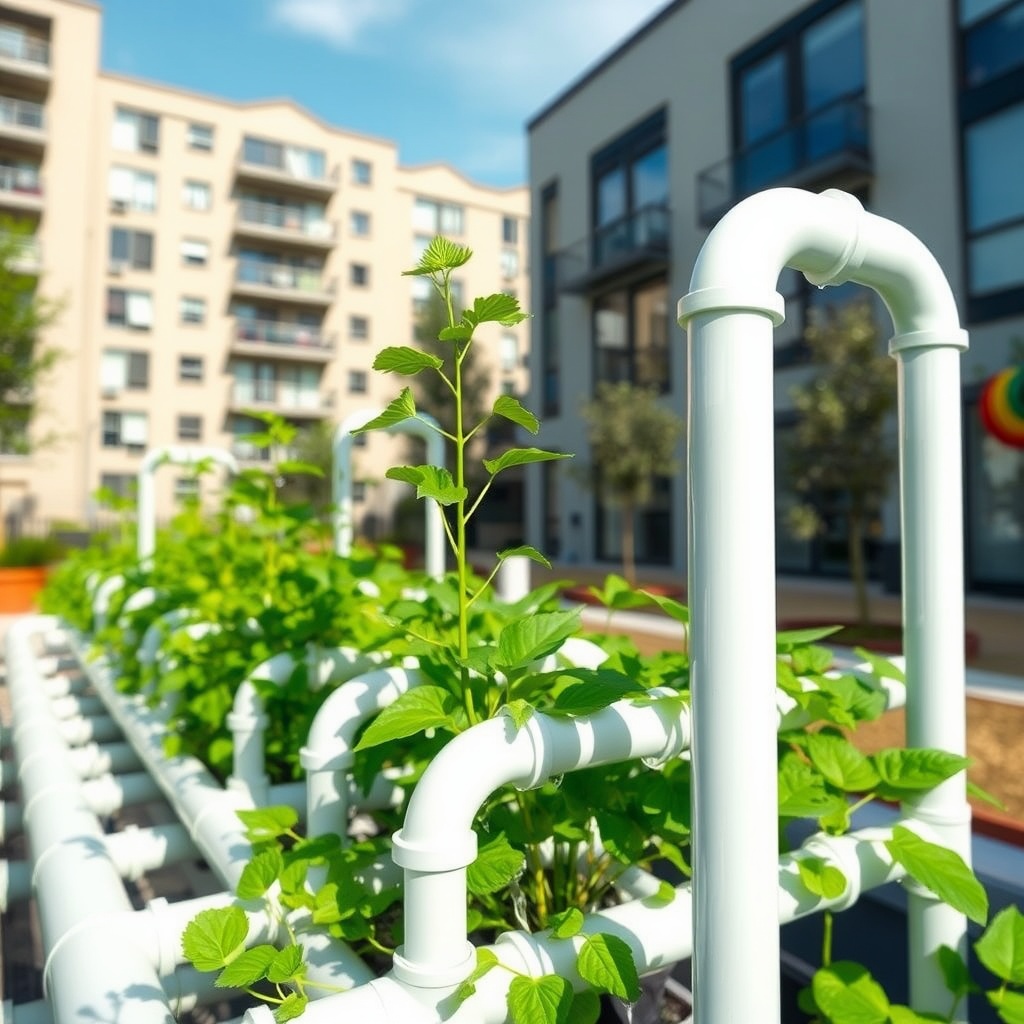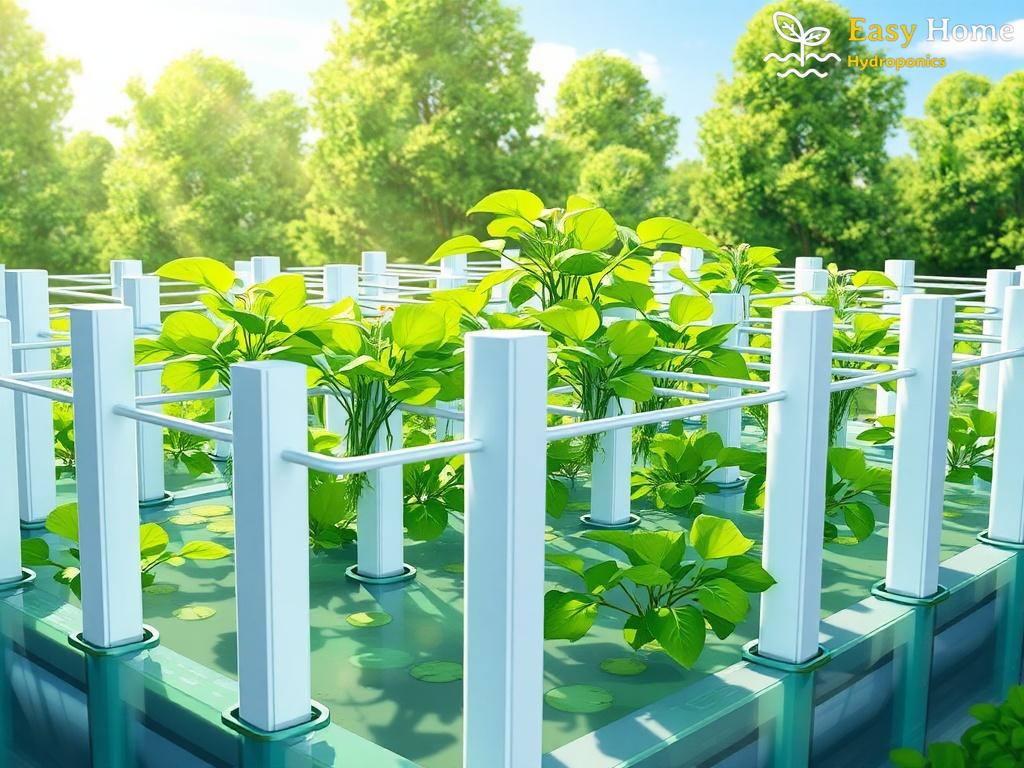Harnessing Rain: The Basics of Hydroponic Systems

As cities grow and space becomes a premium, innovative solutions like hydroponics offer a way to cultivate fresh produce without the need for traditional soil gardening. By utilizing vertical spaces and rainwater, urban dwellers can embrace a sustainable lifestyle while enjoying the benefits of homegrown vegetables and herbs. Hydroponic systems are not only efficient but also environmentally friendly, making them an ideal choice for city gardening.
Hydroponics is a method of growing plants without soil, using nutrient-rich water instead. This technique allows for optimal growth conditions, leading to faster plant development and higher yields. There are various types of hydroponic systems, each with its unique features. Here’s a brief overview of the most popular systems:
- Nutrient Film Technique (NFT): In this system, a thin film of nutrient solution flows over the roots, providing them with essential nutrients.
- Deep Water Culture (DWC): Plants are suspended in a nutrient-rich solution with their roots submerged, allowing for maximum oxygen absorption.
- Wick System: This passive system uses capillary action to draw nutrient solution into the growing medium.
- Ebb and Flow (Flood and Drain): This system periodically floods the plants with nutrient solution and then drains it back into a reservoir.
One of the most exciting aspects of hydroponic gardening is the potential to harness rainwater as a primary water source. Collecting rainwater not only reduces dependency on municipal water supplies but also promotes sustainability. Setting up a rainwater collection system is simple and can be integrated with your hydroponic setup.
Here’s a basic outline of how to construct a vertical hydroponic garden using rain spouts:
- Install gutters or rain spouts on your roof to collect rainwater.
- Connect the gutters to a storage tank to hold the collected rainwater.
- Set up your chosen hydroponic system, ensuring it is positioned vertically to maximize space.
- Use the stored rainwater in your hydroponic system, adjusting nutrient levels as necessary.
By incorporating rainwater into your hydroponic garden, you not only contribute to water conservation but also create a sustainable ecosystem that thrives on natural resources.
From Gutter to Garden: Building Your Vertical Setup

Transforming your home into a lush vertical garden is not just a dream—it can be a reality with the right planning and execution. By utilizing rain spouts, you can efficiently collect rainwater and turn it into a sustainable source for your hydroponic system. This innovative approach not only conserves water but also provides a continuous supply of nutrients for your plants. Let’s explore how to seamlessly transition from simple gutters to a thriving vertical hydroponic garden.
Creating an effective vertical setup begins with a well-thought-out design that incorporates both functionality and aesthetics. You should consider the available space, plant types, and your overall gardening goals. The first step is to determine how many levels you want your garden to have. Generally, a three to five-tier system works well in most urban environments. Each level can be constructed with a combination of gutters or PVC pipes, allowing for easy access to plants for maintenance and harvesting.
Once you have the basic structure in mind, it’s crucial to ensure proper water drainage. An efficient drainage system will prevent waterlogging, which can lead to root rot. Installing a slight incline on each level will facilitate gravity drainage back to your storage tank. By integrating these design elements, you’ll create a functional hydroponic system that not only looks great but also performs optimally.
The heart of your vertical hydroponic garden lies in the seamless integration of rainwater collection and nutrient delivery. Start by installing your gutters or rain spouts directly under your roof eaves, ensuring they are angled to direct water flow into a central storage tank. This tank should be covered to prevent contamination and algae growth, maintaining a clean water supply.
To optimize water usage, consider adding a filtration system that can remove debris from the collected rainwater before it enters the hydroponic setup. Once the water is clean, it can be mixed with nutrient solutions tailored to the specific needs of your plants. Regular monitoring of nutrient levels is essential, as plants in a hydroponic system depend entirely on the solutions provided. This system not only enhances plant growth but also reduces the environmental impact of conventional gardening methods.
| Feature | Vertical Hydroponic Garden | Traditional Soil Garden |
|---|---|---|
| Water Efficiency | Utilizes rainwater, minimizing waste | High water consumption, prone to evaporation |
| Space Utilization | Maximizes vertical space | Requires more horizontal area |
| Growth Rate | Faster plant growth due to nutrient control | Slower growth, dependent on soil conditions |
By thoughtfully connecting your rainwater collection system to your hydroponic setup, you can create a self-sustaining ecosystem that thrives on natural resources. This innovative approach not only enhances the aesthetic appeal of your living space but also fosters a greater connection to the environment.
Selecting the Right Plants for Hydroponic Success

Creating a vertical hydroponic garden is an exciting venture, but the journey doesn’t end with the installation of your rain spouts and nutrient systems. The true heart of your garden lies in the selection of plants that will thrive in this innovative environment. Choosing the right plants is crucial, as it can determine the overall success of your hydroponic system. Whether you are an experienced gardener or a curious beginner, understanding which plants perform best in hydroponic systems will set you on the path to a flourishing vertical garden.
Optimal Choices for Hydroponic Growth
When selecting plants for your hydroponic setup, it’s essential to consider their growth habits and nutrient needs. Leafy greens such as lettuce, spinach, and kale are often recommended for hydroponic systems due to their fast growth rates and minimal space requirements. These plants not only flourish in nutrient-rich water but also adapt well to vertical arrangements. Additionally, herbs like basil, cilantro, and mint are excellent companions in your garden, offering aromatic flavors and a plethora of culinary uses.
Fruiting plants, such as tomatoes, peppers, and strawberries, can also be grown hydroponically, but they typically require more attention and care. These plants benefit from additional support structures due to their weight and growth patterns. However, the rewards can be substantial, as nothing beats the taste of homegrown fruit. It’s important to remember that each plant type has its unique nutrient and light requirements, making careful planning essential to your garden’s success.
Considerations for Light and Space
Another vital aspect to consider when choosing plants for your vertical hydroponic garden is the amount of light they need. Plants such as lettuce and herbs generally require less light, making them ideal for indoor setups or areas with limited sunlight. Conversely, fruiting plants thrive in bright light, so positioning your garden to maximize natural sunlight or integrating grow lights may be necessary. Assessing your available light conditions will help you choose the right plants and ensure they receive the energy required for optimal growth.
Furthermore, the vertical nature of your garden means that you need to think about plant height and growth patterns. Taller plants should be placed at the bottom of your setup to avoid overshadowing smaller varieties. This arrangement not only maximizes space but also ensures that all plants receive adequate light and airflow. By strategically selecting plants based on their growth habits and light requirements, you can create a harmonious and productive vertical hydroponic garden.
Maintaining Your Vertical Garden: Tips and Tricks
Once you’ve established your vertical hydroponic garden, the journey is far from over. In fact, the real magic happens when you focus on maintenance. This ongoing care is essential to ensure that your plants remain healthy, vibrant, and productive. By adhering to a structured maintenance routine, you can optimize growth and enjoy the bountiful harvest that your setup promises. Here are some engaging tips to keep your garden thriving.
One of the most critical aspects of hydroponic gardening is the water quality. Regularly checking and adjusting the pH levels of your nutrient solution is vital, as plants thrive best within a specific pH range, typically between 5.5 and 6.5. Additionally, be sure to monitor the electrical conductivity (EC) of your nutrient solution to gauge the concentration of nutrients. If your plants start showing signs of stress, such as yellowing leaves or stunted growth, it may be time to change the water and refresh the nutrient mix. Furthermore, using rainwater can significantly enhance the quality of your solution, as it is naturally soft and free from the chemicals often found in municipal water supplies.
Another important maintenance practice involves regular pruning and vigilant pest management. Trimming away dead or yellowing leaves not only improves air circulation but also encourages new growth, allowing your plants to focus their energy on producing fresh foliage and fruits. Additionally, keep an eye out for common pests such as aphids or spider mites. Implementing organic pest control methods, like introducing beneficial insects or using natural repellents, can effectively keep your garden free from infestations. Moreover, ensuring proper spacing between plants can prevent overcrowding, which often leads to increased humidity and pest problems.
In conclusion, maintaining your vertical hydroponic garden requires a commitment to regular monitoring and care. By focusing on water quality, implementing effective pruning techniques, and managing pests proactively, you’ll create a thriving ecosystem that not only beautifies your living space but also yields an abundance of fresh produce.
The Eco-Friendly Benefits of Hydroponic Gardening
In an era where environmental consciousness is at the forefront, hydroponic gardening presents a compelling solution to the challenges of traditional agriculture. By utilizing rain spouts for water collection, urban gardeners can significantly reduce their ecological footprint while reaping the rewards of fresh produce. This method not only conserves water but also minimizes the use of chemical fertilizers and pesticides, as the controlled environment of hydroponics allows for healthier growth and fewer pests.
One of the standout features of hydroponic gardening is its remarkable resource efficiency. Compared to conventional soil-based farming, hydroponics uses up to 90% less water, making it an ideal choice for regions facing water scarcity. Moreover, the vertical design of these gardens means that they can produce more food in less space, a boon for city dwellers with limited square footage. This innovative approach not only enhances food security but also promotes biodiversity by allowing various plant species to grow in harmony within the same system.
Engaging in hydroponic gardening fosters a deeper connection to nature and encourages sustainable practices. By embracing this method, individuals become part of a growing movement that prioritizes eco-friendly living and local food production. As these gardens flourish using rainwater, they contribute to a healthier environment by reducing runoff and pollution associated with traditional farming methods. Additionally, the produce grown in these systems is often free from harmful chemicals, providing a cleaner, safer option for consumers who are increasingly aware of the impact of their food choices.




